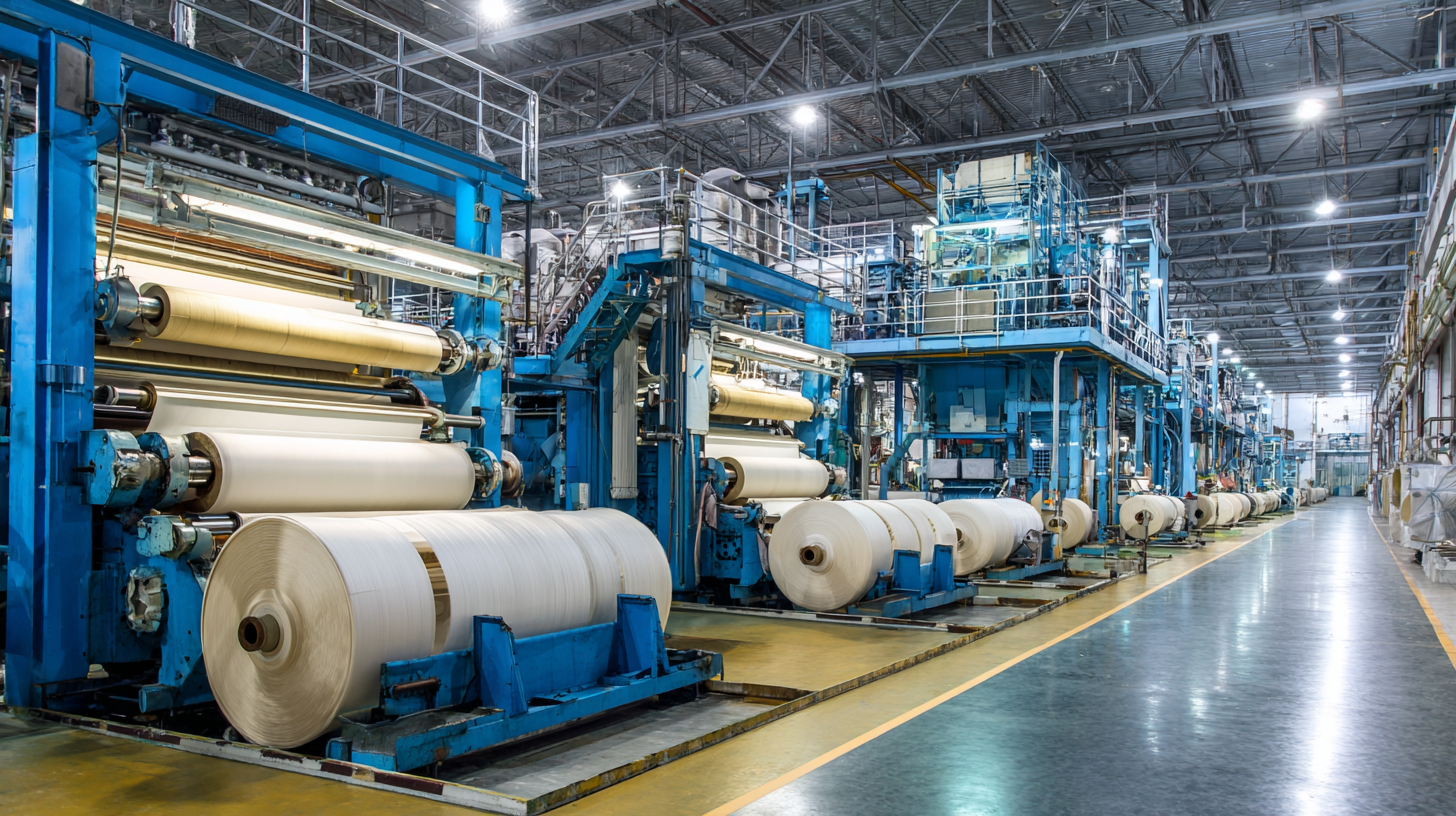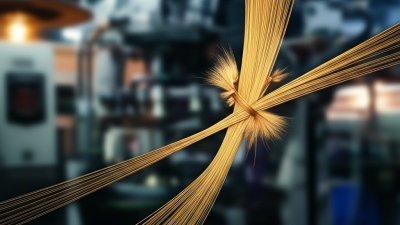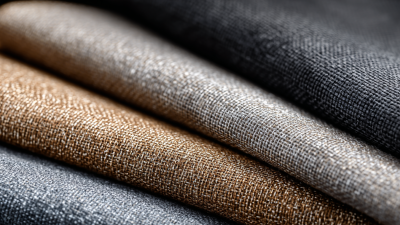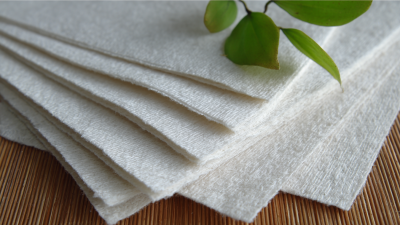How to Maximize the Benefits of Inox Fiber in Your Industry
Table of Contents
- Identifying Key Applications of Inox Fiber in Various Industries
- Evaluating the Mechanical Properties and Cost Advantages of Inox Fiber
- Integrating Inox Fiber into Existing Production Processes for Enhanced Efficiency
- Exploring Environmental Benefits and Sustainability of Inox Fiber Usage
- Analyzing Case Studies: Successful Implementation of Inox Fiber Solutions
- Future Trends: Innovations in Inox Fiber Technology and Industry Adoption
- FAQS
- Conclusion
- Related Posts
In today's competitive industrial landscape, the integration of advanced materials like Inox Fiber is pivotal for enhancing product performance and sustainability. Inox Fiber, known for its exceptional strength, corrosion resistance, and thermal stability, is becoming increasingly popular in sectors such as electronics, automotive, and aerospace.

According to recent industry reports, the demand for high-performance textiles, including those utilizing Inox Fiber, is projected to grow at a CAGR of 5.2% from 2021 to 2026, driven by the rising need for effective EMI shielding solutions. Shijiazhuang Shielday Technology Co., Ltd. stands at the forefront of this trend, offering a comprehensive range of EMI shielding textiles and conductive wires that leverage the unique properties of Inox Fiber. By partnering with Shielday Technology, industries can maximize the benefits of Inox Fiber, ensuring innovative and efficient solutions that meet modern technological demands.
Identifying Key Applications of Inox Fiber in Various Industries
The automotive industry is experiencing a significant shift towards advanced vehicles, driven by stringent emission regulations and the rising demand for electric vehicles (EVs). As governments around the world impose tighter emissions standards, manufacturers are increasingly adopting innovative materials, including inox fiber, to enhance vehicle performance and sustainability. This transition is further accelerated by the growth of the electric vehicle market, which is predicted to reach substantial proportions by 2033. Data forecasts show that the global inox fiber market is expected to flourish as it aligns with the automotive sector’s need for lightweight and durable materials.
In addition to automotive applications, inox fiber is also finding its niche in areas such as construction and healthcare. The global recycled polyester (RPET) fiber market, for instance, is projected to grow significantly, reaching approximately $33.33 billion by 2033. This growth is largely attributed to applications across various sectors including clothing, home textiles, automotive interiors, and construction materials. As industries increasingly seek sustainable solutions, the demand for innovative materials like inox fiber will continue to rise, making it crucial for companies to identify and implement effective strategies to maximize its benefits.
Evaluating the Mechanical Properties and Cost Advantages of Inox Fiber
Inox fiber, known for its impressive mechanical properties, is becoming an essential material across various industries. Its high tensile strength, resistance to corrosion, and lightweight nature make it an excellent choice for applications in sectors like automotive, aerospace, and construction. By evaluating the mechanical properties of inox fiber, companies can harness its advantages to enhance product durability and performance. For instance, using inox fiber in composite materials can lead to lighter yet stronger structures, significantly improving energy efficiency and sustainability.
Cost advantages also play a crucial role in the adoption of inox fiber. While the initial investment may be higher compared to traditional materials, the long-term savings are substantial. Inox fiber’s durability leads to reduced maintenance costs and longer product lifespans. Additionally, its lightweight nature allows for lower transportation costs, contributing to a more cost-effective supply chain. Industries that focus on innovation and sustainability can benefit greatly from incorporating inox fiber, as it not only meets performance requirements but also aligns with economic efficiency strategies.
Integrating Inox Fiber into Existing Production Processes for Enhanced Efficiency
Integrating Inox Fiber into existing production processes can significantly enhance efficiency across various industries, including textiles, automotive, and aerospace. The unique properties of Inox Fiber, such as its resistance to corrosion and lightweight nature, make it an ideal choice for improving product durability while reducing overall production costs. By reevaluating and redesigning manufacturing workflows, companies can effectively incorporate Inox Fiber to streamline operations and increase competitive advantage.

Tips for Integration:
- Conduct a thorough assessment of your current production processes to identify areas where Inox Fiber can replace traditional materials. This step is crucial for ensuring that the integration is smooth and that the benefits of Inox Fiber are maximized.
- Train your workforce on the specific characteristics and handling requirements of Inox Fiber. Proper training can enhance operational efficiency and reduce the risk of material wastage or processing errors.
- Collaborate with suppliers to ensure a consistent supply of high-quality Inox Fiber, which is essential for maintaining production schedules and meeting customer demands.
By focusing on these strategies, industries can reap the benefits of Inox Fiber and foster a culture of innovation and efficiency within their operations.
Exploring Environmental Benefits and Sustainability of Inox Fiber Usage
In recent years, the use of Inox fiber has surged across various industries, primarily due to its remarkable environmental benefits and sustainability features. According to a report by the Global Fiber Reinforced Composites Market, the adoption of Inox fiber materials can reduce carbon emissions by up to 30% compared to traditional fibers. This reduction is particularly significant in industries such as construction and automotive, where sustainability regulations are becoming increasingly stringent.
Additionally, Inox fiber's resistance to corrosion and its longevity contribute to a more sustainable lifecycle. The International Journal of Engineering and Technology highlights that structures made with Inox fiber can last twice as long as those constructed using conventional materials, thereby minimizing waste and the need for frequent replacements. By integrating Inox fiber into their processes, companies not only meet environmental compliance but also enhance their overall efficiency and reduce lifecycle costs, which is essential in today's economy focused on sustainable growth.
Analyzing Case Studies: Successful Implementation of Inox Fiber Solutions
Inox fiber has emerged as a transformative material across various industries, enabling companies to enhance their processes and products significantly. Analyzing case studies from sectors such as automotive, aerospace, and medical devices reveals the substantial benefits realized through the strategic implementation of inox fiber solutions. For instance, a notable automotive manufacturer integrated inox fiber into their vehicle components, resulting in a marked reduction in weight without sacrificing strength. This approach not only improved fuel efficiency but also allowed for innovative designs that were previously unattainable with traditional materials.

In the aerospace industry, one company successfully utilized inox fiber in the development of lightweight, corrosion-resistant components for aircraft frames. This implementation significantly reduced maintenance costs and improved overall safety and performance. Furthermore, a case within the medical sector highlighted how inox fiber was employed in surgical instruments, leading to enhanced durability and efficiency in surgical procedures. These examples underscore the versatility of inox fiber, demonstrating that its application can lead to enhanced productivity and cost-effectiveness, ultimately driving innovation and competitiveness in various markets.
Future Trends: Innovations in Inox Fiber Technology and Industry Adoption
The future of inox fiber technology is bright, with continuous innovations driving its adoption across various industries. According to a recent market research report by Grand View Research, the global inox fiber market is expected to grow at a CAGR of 8.4% from 2023 to 2030. This growth is fueled by the increasing demand for lightweight, durable, and corrosion-resistant materials in sectors such as automotive, aerospace, and marine.
One significant trend is the advancement of composite materials integrating inox fibers, enhancing their strength-to-weight ratio. For instance, the automotive industry is leveraging these developments to produce vehicles that are not only lighter and more fuel-efficient but also possess superior safety features. Similarly, aerospace companies are adopting inox fiber composites to meet stringent weight regulations without compromising on performance.
**Tips:** To keep pace with these innovations, industries should invest in R&D to explore new applications of inox fiber. Collaborating with material scientists can lead to innovative solutions tailored to specific industry needs. Additionally, continuous training for engineers and technicians on the latest inox fiber technologies will ensure that companies remain competitive in a rapidly evolving market.
Future Trends: Innovations in Inox Fiber Technology and Industry Adoption
FAQS
: Inox fiber is being used in various industries including automotive, aerospace, construction, and healthcare.
Inox fiber enhances vehicle performance and sustainability by allowing manufacturers to produce lighter, more fuel-efficient vehicles that meet stringent emission standards.
The global RPET fiber market is projected to grow significantly, reaching approximately $33.33 billion by 2033, influenced by applications in clothing, home textiles, automotive interiors, and construction materials.
In the automotive sector, inox fiber has been used to reduce component weight, improving fuel efficiency. In aerospace, it has been applied to create lightweight, corrosion-resistant aircraft components. In healthcare, inox fiber is utilized in durable surgical instruments.
The global inox fiber market is expected to grow at a compound annual growth rate (CAGR) of 8.4% from 2023 to 2030.
Future trends include the development of composite materials that integrate inox fibers, enhancing strength-to-weight ratios, and increasing adoption across various industries for lightweight and durable applications.
Industries should invest in research and development, collaborate with material scientists for tailored solutions, and ensure continuous training for engineers and technicians on the latest technologies.
Using inox fiber can lead to enhanced productivity, cost-effectiveness, improved product durability, and overall competitiveness in various markets.
Conclusion
In recent years, Inox Fiber has emerged as a crucial material across various industries, owing to its exceptional mechanical properties and cost advantages. By thoroughly evaluating key applications of Inox Fiber, companies can identify how to seamlessly integrate this innovative material into their existing production processes to enhance efficiency. The environmental benefits and sustainability associated with Inox Fiber usage further solidify its position as a preferred choice in manufacturing.
Shijiazhuang Shielday Technology Co., Ltd. stands at the forefront of this trend, offering high-performance EMI shielding textiles and conductive wires that leverage Inox Fiber's unique properties. By analyzing successful case studies and exploring future advancements in Inox Fiber technology, businesses can strategically adopt these solutions, ensuring they remain competitive while contributing to a sustainable future.
Related Posts
-

5 Proven Tips to Choose the Best Antibacterial Socks for Healthy Feet
-

Challenges Encountered with Pbo Fiber Ribbon in Modern Manufacturing
-

Ultimate Guide to Selecting Cotton And Silver Fabrics for Optimal Comfort and Performance
-

A Comprehensive Comparison of Washable Cables for Global Buyers
-

Essential Checklist for Sourcing Bamboo Fiber Nonwoven Fabric: Key Factors to Consider
-

High Temp Resistant Belt: A Comparative Guide to Performance and Applications
Blog Tags:

